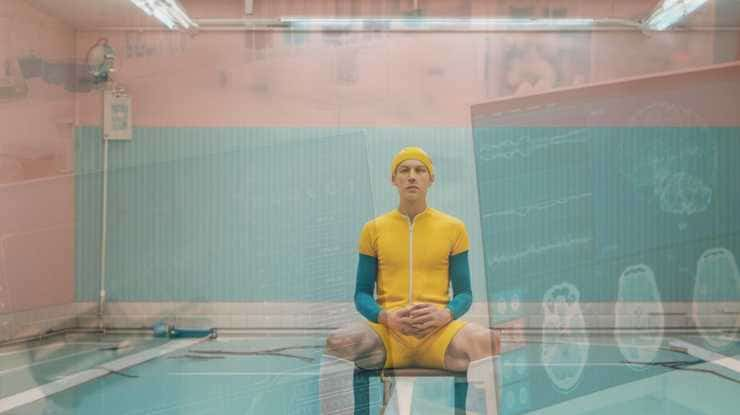New research from the University of South Australia shows that novel brain biometrics could help determine whether an athlete is ready to return to play following a concussion. In a study conducted in collaboration with the University of California, San Francisco (UCSF), researchers discovered that alterations in the brain’s micromovements, known as ‘headpulses,’ could detect the long-term effects of a concussion.
The research contributes to the growing body of knowledge that informs concussion protocols.
Using a custom-designed headset to assess headpulse biometrics among 101 amateur male and female Australian Rules Football players in South Australia, researchers identified brain abnormalities in 81% of concussed players, indicating injury beyond the expected recovery time.
These headpulse changes persisted for 14 days after the onset of concussion symptoms and were exacerbated by a return to play or unsupervised physical activity.
Measuring Concussion Recovery
Kevin Norton, a professor of Exercise Science at the University of South Australia, believes that headpulse measurements could supplement the current return-to-play protocols.
“Traumatic brain injury inflicts more than 60 million people every year, with a third of these being sports-related. While we know that Australia’s sports sector takes concussions seriously — via considered return-to-play protocols — we also know that objective measures of concussion recovery are not fully established,”
Prof Norton said.
In this study, scientists used headpulses – a normal measure of brain ‘wobble’ synchronized with each heartbeat – to assess any changes in frequency caused by a concussion.
They discovered that nearly all players with concussions had a ‘disconnect’ between their symptoms and the headpulse, such that even when the players said they felt fine, the headpulse indicated brain injury.
Stricter Rules Recommended
While most players felt they had recovered 10-14 days after their injury, the study found that some players took up to four weeks to recover and return to normal headpulse patterns.
Australian Football concussion recovery protocols call for 24 to 48 hours of strict physical and cognitive rest, followed by graded individual and team training, assuming no symptom exacerbation; the earliest allowed return-to-play after protocol completion and medical clearance is 12 days after a concussion.
The report Concussions and repeated head trauma in contact sports, released this month by the Australian Senate Committee, recommends that national sporting associations investigate further rule modifications for sports to prevent and reduce the impact of concussions and repeated head traumas.
Sport-related concussions and repetitive head injuries are under-reported in Australia, however, according to the most recent AIHW data, 2305 sports-related concussions occurred between 2019-20. Men received 70% of concussions, and more than a third of those hospitalized were young athletes aged 15 to 24.
Approximately 730 concussions occurred while participating in some form of football, and around 440 occurred while cycling.
Abstract
Importance Concussions are common in sports. Return-to-play protocols can be enhanced by objective biometrics.
Objective To characterize temporal changes of headpulse, a digital biometric, in athletes with sports-related concussion; to explore the association of unstructured physical activity with headpulse changes.
Design, Setting, and Participants This cohort study included headpulse measurements from players in the highest level of amateur Australian Rules Football in South Australia. Analysis included feasibility and validation phases, with the feasibility cohort recruited between August 5, 2021, and September 10, 2021, and the validation cohort recruited between May 5, 2022, and September 3, 2022. Data were analyzed October 2022 through January 2023.
Interventions Cranial accelerometry detected micromovements of the head following cardiac contraction (what we have described as “headpulse”). Headpulse was serially recorded for 1 month in concussed individuals.
Main Outcomes and Measures Headpulse waveforms underwent frequency transformation analysis per prespecified algorithm. Result Z scores were calculated. Headpulse Z scores exceeding 2 (2 SDs from control means) met an abnormality threshold. Headpulse sensitivity, timing, and duration of change were determined.
Results A total of 59 control and 43 concussed individuals (44 total concussions; 1 control also concussed, 1 concussed individual injured twice) provided headpulse measurements. The feasibility cohort (all male) included 17 control (median [IQR] age, 23 [19-28] years) and 15 concussed individuals (median [IQR] age, 21 [19-23] years). The validation cohort included 25 female (median [IQR] age, 21 [20-22] years) and 17 male (median [IQR] age, 26 [23-29] years) control individuals, and 8 female (median [IQR] age, 28 [20-31] years) and 20 male (median [IQR] age, 21 [19-23] years) concussed individuals. Headpulse reached abnormality threshold in 26 of 32 concussed individuals (81%; 9% on day 0, 50% by day 2, 90% by day 14). Headpulse alterations lasted 14 days longer than symptoms and were exacerbated by return-to-play or unsupervised physical activity.
Conclusions and Relevance In this study of 101 amateur Australian Rules Football athletes, the digital headpulse biometric was evaluated in 44 sports-related concussions. Compared with controls, new headpulse changes occurred after concussion; this objective metric may complement return-to-play protocols.
Reference:
- Halabi C, Norton L, Norton K, Smith WS. Headpulse Biometric Measures Following Concussion in Young Adult Athletes. JAMA Netw Open. 2023;6(8):e2328633. doi:10.1001/jamanetworkopen.2023.28633
